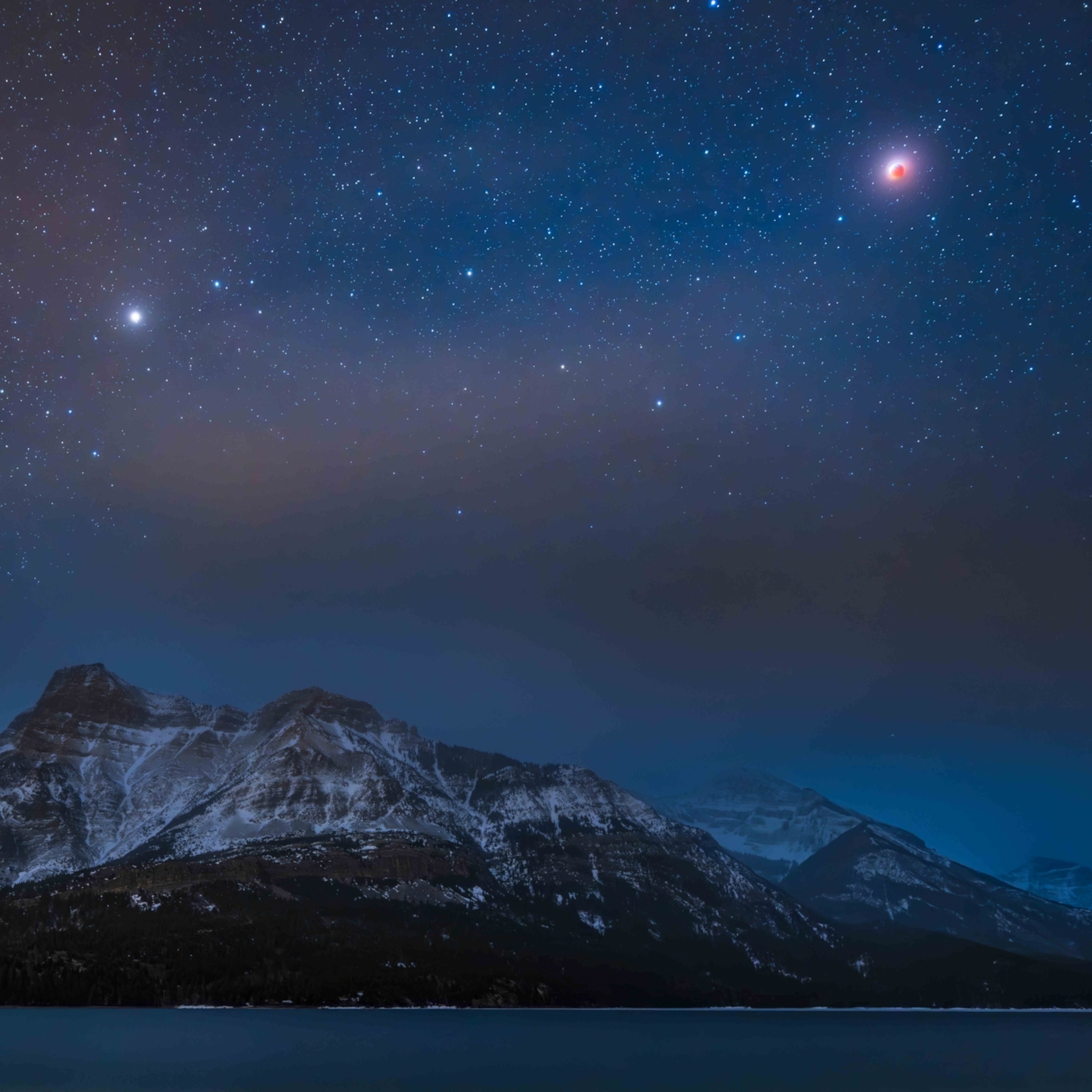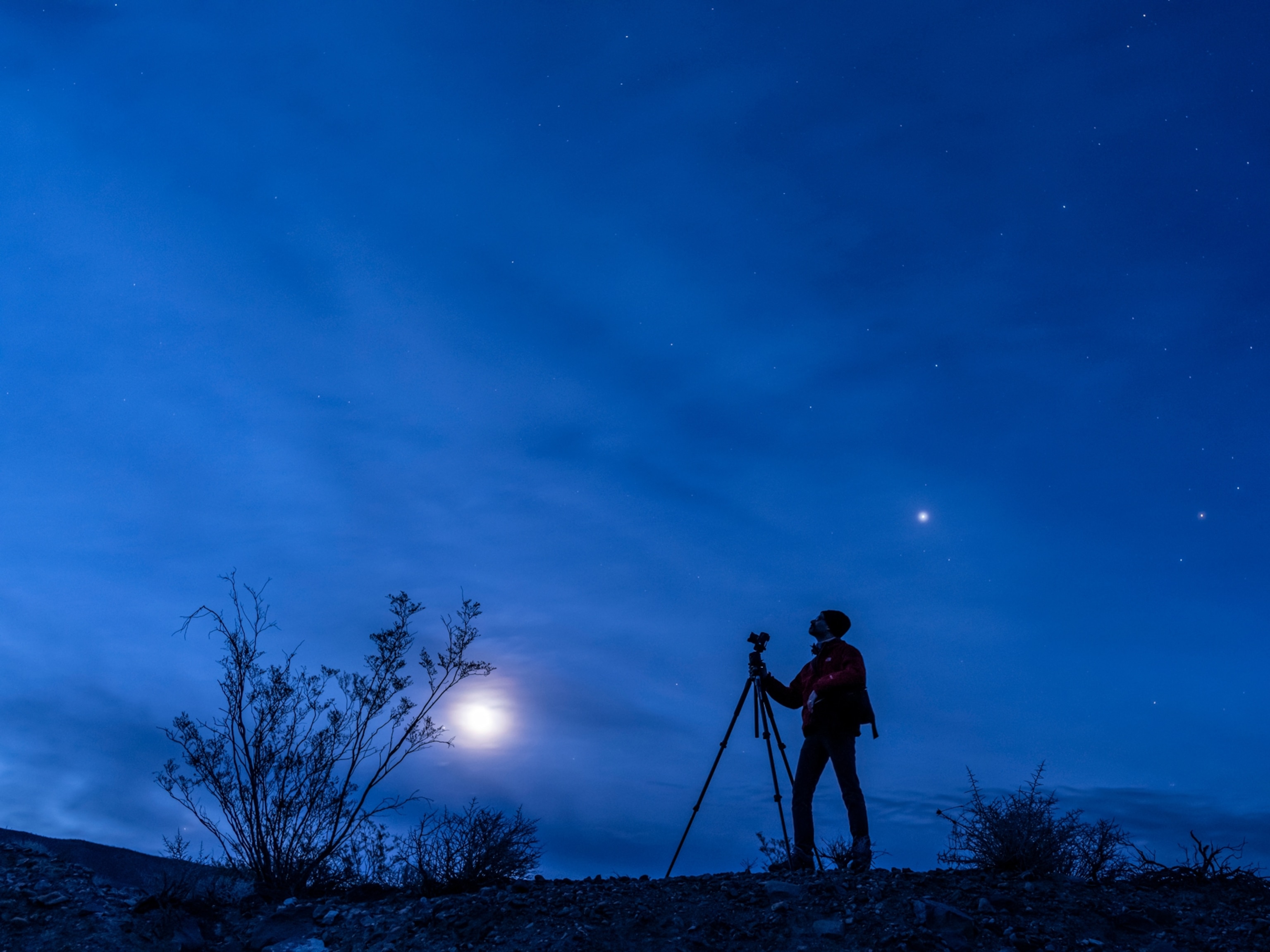
Viewing Guide: Watch Moon Turn Red During Total Lunar Eclipse
Here's how to watch next week's rare total eclipse of the moon.
The first total lunar eclipse in more than two years will grace the skies on Monday, and it's all the more rare because it will be visible above the entire Western Hemisphere.
During the overnight hours of April 14-15, skygazers there will have a front-row seat as the full moon is painted red, creating what many call a "blood moon," as Earth's shadow creeps across the lunar disk.
"Lunar eclipses are exciting because nature puts on a free show for everyone to enjoy, and it causes us to look back at the sky and reexamine our place in the solar system and beyond," said astronomer Raminder Singh Samra of the H.R. MacMillan Space Centre in Vancouver, Canada.
Lunar eclipses occur only when there is a full moon and the sun, Earth, and moon are precisely aligned for our planet's shadow to turn out the lunar lights. (Related: "Solar Eclipse Myths From Around the World.")
During a lunar eclipse, the moon passes behind our planet so that Earth blocks the sun's rays from striking the moon. Due to the moon's tilted orbit around the Earth, one doesn't occur every month. And total eclipses usually happen once every few years, though there are sometimes more than one in a year.
"Since the moon's orbit around the Earth is slightly inclined, it doesn't pass through the shadow every month, therefore every year we get an eclipse twice a year—very rarely we can get up to five," said Samra.
Unlike solar eclipses, lunar ones are safely visible to the unaided eye. (A solar eclipse occurs when the moon comes between the Earth and the sun and blocks the disk of the sun.) (Related: "How to Safely Watch a Solar Eclipse.")
Lunar eclipses have been considered an awe-inspriring sky event for millenia, and ancient astronomers could do rudimentary but fundamental science with them, says Samra.
"Many cultures have mythologies associated with lunar eclipses so there has always been interest in the eclipses," said Samra. "The ancient Greeks were able to use the Earth's shadow cast on the moon to predict the approximate relative sizes of the two bodies."
Lunar eclipses make the scene in skies over heavily populated cities and towns, making next week a special event for all sky-watchers. Here's our viewing guide:
Why is this eclipse so noteworthy?
Beyond its occurrence over two heavily populated continents, next week's event kicks off a lunar eclipse tetrad (group of four). For two years, a lunar eclipse will occur over the Western Hemisphere every six months. In addition to April 14, mark your calendars for this October 8 and for April 4 and September 28, 2015.
If you happen to be clouded out or on the wrong side of the Earth for this month's eclipse, don't fret. You can watch the entire disappearing act online, via a robotic telescope webcast from the SLOOH Observatory live feeds from throughout North America including the Prescott Observatory in Prescott, Arizona.
Why does the moon turn orange-red during a lunar eclipse?
During an eclipse, sunlight shining through the ring of Earth's dusty atmosphere is bent, or refracted, toward the red part of the spectrum and cast onto the moon's surface.
As a result, expect to see the lunar disk go from a dark gray color during the partial phase of the eclipse to a reddish-orange color during totality. The same effect is at work when the sun turns red at sunset.
The moon's color during totality can vary considerably depending on the amount of dust in the Earth's atmosphere at the time. Active volcanoes spewing tons of ash into the upper atmosphere, for instance, can trigger blood-red eclipses.
No one can predict exactly what color we'll see before each eclipse.
Who gets to see the sky show?
The best views will be from the entire North and South American continents and much of the Pacific Basin, including Hawaii. Eastern Australia should get to see the second half of the show on the night of April 15, as the moon rises during totality.
Europe, Africa, and central Asia, meanwhile, will miss the entire eclipse because it will be daytime in those regions at the time of the event.
When's the best time to look?
The entire eclipse will last over three and a half hours, starting at 1:58 a.m. EDT (April 15) or 10:58 p.m. PDT (April 14) when the moon begins to plunge into the umbra, the darkest center of our planet's shadow.
The best part of eclipse will be during totality, starting at 3:07 a.m. EDT (12:07 a.m. PDT) and lasting 78 minutes. After that, Earth's shadow begins to leave the surface of the moon.
"The most spectacular part of the event for me is watching a slow progression of the moon changing color," explains Samra.
"It will start off with the very familiar white but then progressively become fainter and then turn a deep red before emerging out of the Earth's shadow and returning to its familiar white color."
The height, or midpoint, of the total eclipse occurs at 3:46 a.m. EDT (12:46 a.m. PDT).
Extra Sky Spectacle
As a sky-watching bonus, Spica—the bright star in the constellation Virgo—will appear very close to the moon during the eclipse, less than 2 degrees away. That's equal to the width of two middle fingers held at arm's length.
And look for orange-hued, starlike Mars shining bright off to their west. The red planet happens to be a few days past its closest approach to Earth, at 57 million miles (92 million kilometers) away.
Follow Andrew Fazekas, the Night Sky Guy, on Twitter, Facebook, and his website.








